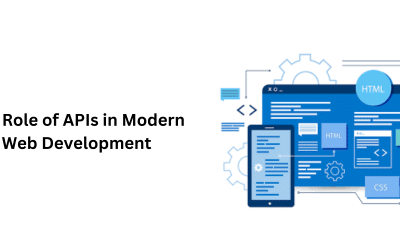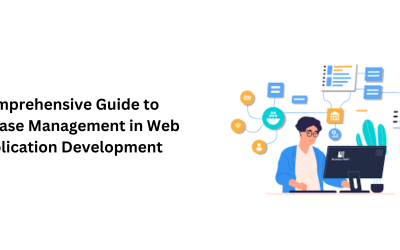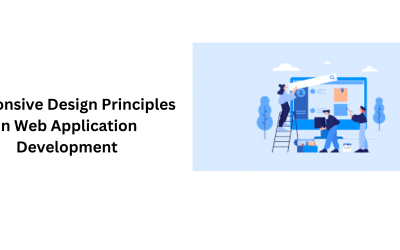In the dynamic landscape of web application development, ensuring robust security measures is paramount to safeguarding sensitive data and user privacy. As the digital realm continues to evolve, so do the sophisticated threats targeting web applications. This necessitates a comprehensive understanding of security best practices to fortify the web app development process and protect against potential vulnerabilities.
The introduction of “Security Best Practices for Web Application Development” delves into the critical aspects of creating secure web applications. From authentication and authorization mechanisms to encryption techniques and secure coding principles, this guide aims to equip developers with the knowledge and strategies needed to build resilient web applications.
By exploring common threats, emerging risks, and implementing proactive security measures, developers can contribute to a safer online environment, instilling confidence in users and stakeholders alike. This comprehensive overview sets the stage for a detailed exploration of key security considerations essential for the modern web development landscape.
Importance of Security in Web Application Development
The importance of security in web application development cannot be overstated, as the digital landscape is rife with ever-evolving threats and vulnerabilities. Web applications store and handle vast amounts of sensitive data, ranging from personal information to financial details, making them lucrative targets for malicious actors. In the absence of robust security measures, these applications become vulnerable to a myriad of risks, including unauthorized access, data breaches, and exploitation of software vulnerabilities. Security breaches not only compromise user privacy but also erode trust in the application and its developers, leading to potential legal consequences and financial losses.
As users increasingly rely on web applications for various tasks, from online shopping to banking and communication, the need for stringent security protocols becomes imperative. A secure web application is a testament to the commitment of developers and organizations to safeguarding user information, ensuring the confidentiality, integrity, and availability of data. Beyond protecting against external threats, a focus on security in the development process also shields applications from inadvertent vulnerabilities, coding errors, and potential exploitation of loopholes.
By adopting a proactive approach to security, developers contribute to a safer online environment, fostering user confidence and maintaining the integrity of digital interactions. In essence, the significance of security in web application development extends far beyond mere protection—it is a fundamental pillar for building trust, resilience, and longevity in the ever-evolving digital ecosystem.
Understanding Common Web Application Threats
Understanding common web application threats is indispensable in the realm of cybersecurity, as web applications remain prime targets for a diverse array of malicious activities. One prevalent threat is injection attacks, where attackers manipulate input fields to inject malicious code, potentially leading to data breaches or unauthorized access.
Cross-Site Scripting (XSS) is another formidable menace, enabling attackers to inject malicious scripts into web pages viewed by other users. Cross-Site Request Forgery (CSRF) poses a risk by tricking users into executing unwanted actions without their consent. Brute force attacks target authentication mechanisms, attempting to gain unauthorized access by systematically trying all possible passwords.
Security misconfigurations, a commonly overlooked threat, arise from improperly configured settings, exposing sensitive information or granting unauthorized access. File upload vulnerabilities can be exploited to execute malicious code or upload malicious files. SQL injection attacks, exploiting inadequately sanitized database inputs, pose a significant risk to the integrity and confidentiality of data.
By understanding these threats, developers can implement robust security measures, including input validation, parameterized queries, and secure coding practices, to fortify web applications against potential vulnerabilities. Continuous awareness, proactive monitoring, and regular security audits are essential in mitigating these threats, ensuring the resilience and security of web applications in the face of an ever-evolving cyber landscape.
Secure Coding Principles for Developers
Secure coding principles form the bedrock of a resilient defense against the myriad of threats that web applications encounter in the digital landscape. Developers play a pivotal role in crafting applications that not only deliver functionality but also prioritize security from their inception. One fundamental principle involves input validation, where developers rigorously scrutinize and sanitize user inputs to prevent injection attacks.
By validating and sanitizing data at the server-side, potential exploits like SQL injection and Cross-Site Scripting (XSS) can be thwarted. Another crucial aspect is proper error handling, which minimizes the risk of unintentional information disclosure. Developers should implement meaningful error messages for users while logging detailed error information internally for troubleshooting, avoiding inadvertent disclosure of sensitive information. Secure coding also emphasizes the principle of least privilege, ensuring that applications and users operate with only the minimum necessary permissions, limiting the potential damage from compromised accounts.
Regularly updating and patching dependencies, libraries, and frameworks is integral to secure coding, as outdated components may harbor known vulnerabilities. Adopting secure communication practices through the use of HTTPS further safeguards data in transit, protecting against eavesdropping and man-in-the-middle attacks. By adhering to secure coding principles, such as proper session management, secure password storage, and adherence to secure coding standards, developers contribute to the creation of robust, resilient web applications that prioritize user privacy and data integrity in the face of an ever-evolving threat landscape.
Authorization and Access Control Strategies
Authorization and access control strategies are critical components of web application security, serving as a safeguard against unauthorized access and potential data breaches. Effective authorization ensures that users have appropriate permissions to access specific resources, thereby preventing unauthorized individuals from exploiting vulnerabilities or accessing sensitive information. Role-based access control (RBAC) is a widely adopted strategy where access permissions are assigned based on user roles, streamlining the management of privileges across the application.
Attribute-based access control (ABAC) takes a more granular approach, considering various attributes such as user characteristics and environmental conditions to determine access rights dynamically. Implementing the principle of least privilege is essential, restricting users and processes to the minimum level of access necessary for their tasks, reducing the potential impact of a security breach. Access control lists (ACLs) and capabilities are additional tools that grant or deny access to specific resources based on predefined rules.
Regularly auditing and reviewing access control configurations ensure that permissions align with the evolving needs of the application and organization, reducing the likelihood of unintended access. Multi-factor authentication (MFA) adds an extra layer of security by requiring users to verify their identity through multiple authentication methods. Comprehensive access control strategies, combined with secure coding practices, contribute to a robust security posture, fortifying web applications against unauthorized access attempts and potential exploits, thereby preserving the confidentiality and integrity of sensitive data.
Data Encryption Techniques in Web Applications
Data encryption techniques play a pivotal role in fortifying the security of web applications by safeguarding sensitive information from unauthorized access and potential breaches. In the context of web application development, the implementation of Transport Layer Security (TLS) or its predecessor, Secure Sockets Layer (SSL), is fundamental.
TLS/SSL protocols encrypt data during transit, ensuring that information exchanged between the user’s browser and the server remains confidential and protected from interception by malicious actors. Additionally, employing strong encryption algorithms for data at rest enhances the security of stored information within databases or file systems. Advanced Encryption Standard (AES) is widely regarded for its robustness and is commonly used for encrypting sensitive data.
Hashing techniques further contribute to data integrity by creating fixed-size hash values representing the original data, enabling verification of data integrity during transmission or storage. Implementing end-to-end encryption, especially for applications handling confidential communications, ensures that data remains encrypted throughout its entire journey, reducing the risk of interception even within the application infrastructure. Key management practices, such as secure storage and rotation of encryption keys, are crucial for maintaining the effectiveness of encryption strategies.
By adopting a layered approach to encryption that encompasses both data in transit and data at rest, developers enhance the overall security posture of web applications, providing users with confidence in the confidentiality and integrity of their information within the digital ecosystem.
Input Validation and Sanitization
Input validation and sanitization constitute essential pillars in the defense against various web application vulnerabilities, offering a robust line of defense to thwart malicious activities. Input validation involves scrutinizing user-provided data to ensure it conforms to expected formats and ranges, preventing the injection of malicious code. By enforcing stringent validation rules on the server side, developers can mitigate the risks associated with common attacks like SQL injection and Cross-Site Scripting (XSS). Equally vital is input sanitization, a process that cleanses user input of potentially harmful elements or characters before processing.
Sanitization techniques, such as HTML escaping or encoding, significantly reduce the likelihood of XSS attacks by neutralizing potentially dangerous scripts embedded in user inputs. Regular expressions, white-listing, and black-listing are effective tools in the validation and sanitization arsenal, allowing developers to define and enforce acceptable input patterns. By adopting a proactive approach to input validation and sanitization, developers fortify their web applications against a wide array of security threats, ensuring the integrity and security of user data.
These practices not only contribute to a more resilient defense mechanism but also minimize the attack surface, preventing the exploitation of vulnerabilities arising from unchecked and unsanitized user inputs. A thorough understanding and consistent application of input validation and sanitization principles empower web app developers to create web applications that resist manipulation attempts, promoting a safer and more secure digital environment for users and organizations alike.
Cross-Site Request Forgery (CSRF) Protection
Cross-Site Request Forgery (CSRF) protection is imperative in the realm of web application security to counteract a deceptive attack vector that exploits users’ authenticated sessions. CSRF occurs when an attacker tricks a user’s browser into making unauthorized requests on a different site where the user is authenticated, leading to unintended actions on the victim’s behalf. To mitigate CSRF threats, developers employ various protective measures. Implementing anti-CSRF tokens is a widely adopted strategy, where unique tokens are generated and embedded within forms or requests.
These tokens are then validated on the server side, ensuring that the incoming request originated from the legitimate user and not from a malicious source attempting to forge requests. Developers should incorporate the SameSite attribute in cookies to control when cookies are sent in cross-site requests, minimizing the risk of unauthorized access through maliciously initiated requests. Additionally, enforcing the use of secure and HTTP-only cookies adds an extra layer of protection against potential CSRF exploits.
Educating developers about secure coding practices, including the proper use of HTTP methods and ensuring the predictability of actions, contributes to a comprehensive CSRF protection strategy. Regular security audits and penetration testing further validate the effectiveness of CSRF protection mechanisms. By integrating these multifaceted approaches, developers can substantially reduce the vulnerability of web applications to CSRF attacks, preserving the integrity of user interactions and bolstering overall cybersecurity measures.
Security Headers for HTTP Responses
In the realm of web application security, the implementation of security headers in HTTP responses is a fundamental practice to enhance resilience against various cyber threats. Security headers are additional instructions sent by a web server to a browser, instructing it on how to handle and interact with the web page. One crucial security header is the Content Security Policy (CSP), which mitigates the risks associated with Cross-Site Scripting (XSS) attacks by defining a whitelist of trusted sources for content, scripts, and other resources.
Another vital header is the Strict-Transport-Security (HSTS), which enforces the use of secure, encrypted connections over HTTP by informing the browser to only interact with the website over HTTPS, thereby reducing the risk of man-in-the-middle attacks. X-Content-Type-Options helps prevent MIME-sniffing vulnerabilities by explicitly declaring the expected content type, while X-Frame-Options safeguards against clickjacking by preventing the web page from being embedded within an iframe.
The Referrer-Policy header controls how much information is included in the HTTP Referer header, offering privacy protection. By employing security headers such as these, web app developers can fortify web applications against a spectrum of common vulnerabilities and bolster overall security posture. Regularly configuring and updating these headers, along with conducting security audits, ensures that web applications remain resilient to evolving threats, providing users with a more secure online experience and mitigating potential risks associated with malicious exploitation of vulnerabilities.
Content Security Policy (CSP) Implementation
The implementation of Content Security Policy (CSP) stands as a crucial component in fortifying web application security by mitigating the risks associated with Cross-Site Scripting (XSS) attacks. CSP is a security standard that allows developers to define a set of policies specifying which resources the browser is permitted to load and execute. By setting up a robust CSP, developers can significantly reduce the potential for malicious script injection and unauthorized code execution.
A well-crafted CSP involves defining a whitelist of trusted sources for scripts, stylesheets, images, fonts, and other resources. This limits the browser’s execution of scripts to only those from approved domains, preventing the execution of scripts injected by attackers. The ‘nonce’ and ‘hash’ attributes in CSP enable developers to specify allowed scripts using cryptographic nonces or hashes, providing an additional layer of security against inline script injection.
CSP also facilitates reporting mechanisms, allowing developers to receive reports on policy violations and potential security threats. However, effective CSP implementation requires a balance between security and functionality, as overly restrictive policies may impact the proper functioning of legitimate scripts. Regular testing, monitoring, and adjustment of CSP policies contribute to an adaptive and robust security posture, enhancing the overall resilience of web applications against XSS vulnerabilities and bolstering user confidence in the integrity and safety of their online interactions.
Secure File Uploads and Downloads
Securing file uploads and downloads is a critical aspect of web application development, as these functionalities can be exploited to introduce malicious content or compromise the integrity of user data. For file uploads, implementing stringent validation mechanisms is paramount to ensure that only authorized and safe file types are accepted. Developers should employ both client-side and server-side validation, checking file types, sizes, and content to prevent potential threats such as file-based attacks and malware injections.
Utilizing a secure file storage mechanism is essential to thwart directory traversal attacks and to ensure that uploaded files are stored in a location inaccessible to unauthorized users. Renaming files upon upload and restricting permissions to the upload directory further enhance security. Additionally, implementing file upload quotas helps prevent abuse and denial-of-service attacks.
Secure downloads involve safeguarding against common threats like path traversal and ensuring that users can only access files for which they have appropriate permissions. Encrypting sensitive data during transit using secure protocols such as HTTPS is crucial for maintaining the confidentiality and integrity of downloaded files. Regular security audits, including penetration testing, can help identify and address potential vulnerabilities in file handling processes. By adhering to secure coding practices, implementing robust validation and storage mechanisms, and incorporating encryption measures, developers can ensure that file uploads and downloads within web applications are executed securely, safeguarding against potential exploits and bolstering the overall resilience of the application against malicious activities.
Session Management Security
Session management security is a pivotal element in web application development, essential for maintaining user authentication and safeguarding sensitive data during user sessions. The session management process involves creating, maintaining, and terminating user sessions, and a secure implementation is critical to prevent unauthorized access and protect user privacy. Developers must generate secure and random session identifiers, making it difficult for attackers to predict or brute-force session tokens.
Implementing session timeouts and idle session expiration ensures that inactive sessions are automatically terminated, reducing the risk of session hijacking. Secure transmission of session identifiers over HTTPS encrypts data in transit, preventing eavesdropping and man-in-the-middle attacks. Utilizing secure and HTTP-only cookies for session management adds an extra layer of protection by preventing client-side scripts from accessing sensitive session data. Developers should avoid exposing session identifiers in URLs and implement secure cross-site request forgery (CSRF) protection mechanisms to prevent attackers from manipulating session state.
Regularly rotating session identifiers and employing session fixation protection contribute to a more resilient session management system. Session logs and monitoring mechanisms aid in the detection of suspicious activities, enabling timely response to potential security incidents. By integrating these secure session management practices, developers enhance the overall security posture of web applications, ensuring that user sessions are protected against various threats and unauthorized access, thus fostering a trustworthy and secure user experience.
Database Security in Web Applications
Ensuring robust database security is paramount in web application development to protect sensitive information and maintain the integrity of user data. The first line of defense involves proper authentication and authorization mechanisms, restricting access to the database based on user roles and privileges. Implementing strong, unique passwords and employing multi-factor authentication for database access adds an extra layer of protection against unauthorized entry. Encryption of data at rest and in transit using industry-standard algorithms, such as Advanced Encryption Standard (AES), safeguards against potential breaches and data interception.
Regularly updating database software and applying security patches is critical to address known vulnerabilities and bolster overall resilience. Employing parameterized queries and stored procedures helps prevent SQL injection attacks, a prevalent threat to database security. Access controls should be configured to limit direct interaction with the database, ensuring that only necessary components of the application can communicate with it.
Regular security audits and vulnerability assessments contribute to proactive threat detection, allowing developers to identify and address potential weaknesses before they can be exploited. Additionally, monitoring and logging database activities facilitate the prompt detection of suspicious behavior and aid in forensic analysis in the event of a security incident. By adhering to these comprehensive security measures, developers fortify the database infrastructure of web applications, mitigating the risks of unauthorized access, data breaches, and other potential security threats.
API Security Guidelines
API (Application Programming Interface) security is integral to the overall cybersecurity posture of web applications, as APIs facilitate the seamless exchange of data and functionality between different software components. To ensure the robustness of API security, developers should adhere to a set of guidelines designed to mitigate potential vulnerabilities. First and foremost, proper authentication mechanisms must be implemented, ensuring that only authorized users or systems can access the API endpoints. OAuth tokens, API keys, or other secure authentication methods should be employed based on the sensitivity of the data and the nature of the interactions.
Authorization controls must be implemented to define and enforce access privileges, restricting users or applications to only the resources they legitimately require. Employing HTTPS to encrypt data in transit enhances confidentiality and protects against man-in-the-middle attacks. Regularly rotating and securely storing API keys and credentials is crucial to prevent unauthorized access. Input validation should be applied to user inputs and API requests to thwart injection attacks and other malicious activities.
Rate limiting and throttling mechanisms help prevent abuse, ensuring fair use of the API and protecting against denial-of-service attacks. Comprehensive logging and monitoring of API activities enable the timely detection of anomalies or potential security incidents. Regular security assessments, including penetration testing, contribute to identifying and remedying vulnerabilities proactively. By adopting these API security guidelines, developers can establish a resilient and secure foundation for their web applications, fostering trust and safeguarding against a range of potential threats in the evolving digital landscape.
Secure Communication with HTTPS
Implementing secure communication through HTTPS (Hypertext Transfer Protocol Secure) is paramount for web applications to ensure the confidentiality, integrity, and authenticity of data exchanged between users and servers. HTTPS encrypts the data transmitted between a user’s browser and the web server, preventing eavesdropping and man-in-the-middle attacks.
To establish a secure connection, a website must obtain and install an SSL/TLS (Secure Sockets Layer/Transport Layer Security) certificate. This certificate verifies the authenticity of the website and enables the encryption of data in transit. HTTPS safeguards sensitive information, such as login credentials, personal details, and financial transactions, from interception by malicious actors. Search engines increasingly prioritize secure websites in their rankings, emphasizing the importance of HTTPS for search engine optimization (SEO). Furthermore, modern web browsers display security indicators, such as a padlock icon, for HTTPS-enabled sites, instilling user confidence in the safety of their interactions.
Beyond data encryption, HTTPS also ensures the integrity of the transmitted data, as any tampering during transit would be detected. Migrating from HTTP to HTTPS is not only a security best practice but also addresses evolving privacy concerns and regulatory requirements. With the emergence of initiatives like Let’s Encrypt, obtaining SSL/TLS certificates has become more accessible, encouraging widespread adoption of HTTPS. By prioritizing secure communication through HTTPS, web developers contribute to a safer online environment, bolster user trust, and protect sensitive information in an era where digital security is of paramount importance.
Logging and Monitoring for Security Incidents
Effective logging and monitoring for security incidents are indispensable components of a robust cybersecurity strategy, providing organizations with the means to detect, respond to, and mitigate potential threats in real-time. Logging involves the systematic recording of events and activities within a system, while monitoring entails actively analyzing these logs for suspicious or anomalous patterns. Security incidents can encompass a range of activities, from unauthorized access attempts to potential data breaches. By implementing comprehensive logging practices, organizations generate a detailed record of user interactions, system changes, and network activities.
These logs serve as a crucial resource for investigating security incidents, conducting forensic analysis, and meeting compliance requirements. Continuous monitoring of these logs allows for the prompt detection of abnormal patterns or indicators of compromise, facilitating a rapid response to potential threats. Automated alerts and notifications can be configured to promptly notify security personnel of unusual activities, enabling timely intervention.
Furthermore, integrating Security Information and Event Management (SIEM) solutions can streamline the analysis of logs and provide a centralized platform for monitoring diverse security events. Regular audits and reviews of logs contribute to a proactive security posture, allowing organizations to refine their security measures based on historical data and evolving threats. By investing in logging and monitoring capabilities, organizations enhance their ability to identify and mitigate security incidents swiftly, minimizing the impact of potential breaches and ensuring the ongoing resilience of their digital infrastructure.
Error Handling and Information Disclosure Prevention
Effective error handling and information disclosure prevention are critical aspects of web application security, contributing to both user experience and the overall resilience of the system. Well-designed error handling mechanisms provide users with clear and informative messages in the event of unexpected issues, facilitating problem resolution and reducing frustration. However, care must be taken to avoid disclosing sensitive information that could be exploited by malicious actors.
Generic error messages should be presented to users, avoiding the exposure of system details or internal configurations that could aid potential attackers. Additionally, developers should implement custom error pages to replace default server error messages, ensuring a consistent and controlled response to errors. Comprehensive logging of errors, with appropriate levels of detail, aids developers in identifying and addressing issues promptly while minimizing the risk of information disclosure. Security through obscurity should be avoided, and error messages should not reveal unnecessary details about the system architecture or implementation. Regular testing and validation of error-handling mechanisms, including boundary testing and negative testing, help uncover potential vulnerabilities.
By prioritizing robust error handling and mitigating information disclosure, web developers contribute to a more secure and user-friendly environment, fostering trust among users and minimizing the potential impact of security incidents. This approach aligns with best practices in web application security, promoting a proactive stance against potential vulnerabilities and enhancing the overall reliability of digital systems.
Security Patching and Updates
Security patching and regular updates constitute fundamental practices in maintaining the resilience of web applications and systems against evolving threats. Operating systems, web servers, databases, and third-party software components are all susceptible to vulnerabilities that can be exploited by malicious actors. Security patches, released by software vendors, address known vulnerabilities and introduce improvements to system security. Regularly applying these patches ensures that the system is fortified against the latest threats and exploits.
Delayed or neglected patching can leave systems susceptible to known vulnerabilities, increasing the risk of security breaches. Automated patch management tools can streamline the process, ensuring timely updates and reducing the window of exposure to potential threats. In addition to patching the underlying infrastructure, developers must stay vigilant regarding updates to the web application itself, including its libraries, frameworks, and dependencies. Regularly updating the application’s codebase is crucial for addressing security vulnerabilities, enhancing functionality, and maintaining compatibility with evolving technologies.
However, it is essential to test updates in a staging environment before deploying them to production to mitigate the risk of introducing new issues. By prioritizing security patching and updates, organizations bolster their cybersecurity posture, reduce the attack surface, and demonstrate a commitment to proactively addressing potential vulnerabilities. This proactive stance is integral to maintaining the confidentiality, integrity, and availability of data in the ever-changing landscape of cybersecurity threats.
Third-Party Library and Framework Security
Third-party libraries and frameworks are invaluable assets in accelerating web application development, but their integration necessitates careful consideration and ongoing management to ensure security. These external components can introduce vulnerabilities that may be exploited by attackers if not properly handled.
Security reviews of third-party libraries should be conducted before integration, evaluating their track record, community support, and the responsiveness of maintainers to security issues. Regularly monitoring security advisories and updates from the library or framework developers is essential, as vulnerabilities may be discovered and patched over time. Developers should prioritize using the latest, patched versions and promptly apply updates to mitigate known vulnerabilities. Dependency scanning tools can assist in identifying outdated or vulnerable libraries within a project. Additionally, developers should minimize the inclusion of unnecessary dependencies, reducing the potential attack surface.
Furthermore, implementing Content Security Policy (CSP) can mitigate the risks associated with malicious code injection through third-party libraries. Continuous security awareness and education for development teams are critical to fostering a proactive security culture when working with external components. By adopting these practices, organizations can harness the benefits of third-party libraries and frameworks while maintaining a vigilant approach to security, reducing the risk of exploitation and ensuring the overall resilience of web applications in the face of emerging threats.
Mobile Responsiveness and Security Considerations
Mobile responsiveness is a critical aspect of modern web development, ensuring that websites provide optimal user experiences across a diverse range of devices. However, achieving mobile responsiveness requires careful consideration of security implications. Mobile devices, with their varying screen sizes and operating systems, introduce unique challenges that developers must address to maintain security standards.
Responsive design must encompass secure coding practices to mitigate potential vulnerabilities associated with mobile platforms. Developers should prioritize designing mobile-friendly interfaces that adapt seamlessly to different screen sizes while avoiding common pitfalls such as viewport manipulation or insufficient input validation. As mobile devices often operate on less secure networks, it becomes crucial to enforce secure communication through the use of HTTPS to protect sensitive data in transit.
Additionally, stringent authentication mechanisms, including biometric authentication when applicable, enhance the security of mobile applications. Regular security testing, including mobile application penetration testing, helps identify and remediate vulnerabilities specific to mobile platforms. Developers should also stay abreast of mobile operating system updates and security best practices to address emerging threats and maintain the overall resilience of mobile-responsive web applications. By intertwining mobile responsiveness with robust security considerations, developers can create a seamless, user-friendly experience while safeguarding against potential exploits and ensuring the confidentiality and integrity of sensitive information accessed via mobile devices.
Secure File and Resource Storage
Secure file and resource storage are a pivotal element in web application development, crucial for protecting sensitive data and ensuring the integrity of user-uploaded content. Developers must adopt robust practices to mitigate potential vulnerabilities and unauthorized access. Encryption plays a central role, both in transit and at rest, safeguarding files from interception during transmission and protecting stored data from unauthorized access.
Implementing access controls is equally essential, ensuring that only authorized users have permission to upload, modify, or access specific files and resources. File metadata should be scrutinized and sanitized to prevent security risks associated with filenames, such as path traversal attacks. Employing secure storage mechanisms, whether in databases or file systems, requires careful consideration of potential risks and adherence to best practices.
Regularly auditing and monitoring file storage infrastructure aids in the timely detection of anomalies or potential security incidents. Versioning and backup mechanisms further contribute to data resilience, enabling the recovery of files in the event of accidental deletions or corruption. Additionally, developers should consider implementing secure file upload features, including file type validation and size restrictions, to prevent the exploitation of potential vulnerabilities. By integrating these secure file and resource storage practices, developers fortify the overall security posture of web applications, ensuring that user-uploaded content remains confidential, unaltered, and accessible only to those with proper authorization. This comprehensive approach addresses the dynamic challenges associated with secure data handling in web development, fostering user trust and mitigating potential risks.
Security Testing Techniques for Web Applications
Security testing for web applications is a crucial phase in the software development lifecycle, aimed at identifying and mitigating potential vulnerabilities that could be exploited by malicious actors. Penetration testing, a widely-used technique, involves simulated attacks to uncover weaknesses in the application’s defenses. This process evaluates the effectiveness of security controls and provides valuable insights into areas that require improvement.
Vulnerability scanning tools automate the process of identifying known vulnerabilities, offering a systematic approach to pinpointing potential security risks. Code review, both manual and automated, helps scrutinize the application’s source code for security flaws, ensuring that secure coding practices are adhered to. Threat modeling involves assessing the application’s architecture to identify and prioritize potential threats, enabling developers to implement appropriate countermeasures.
Security-focused unit testing, where individual components of the application are tested for security flaws, complements overall testing efforts. Web application firewalls (WAFs) can be employed to monitor and filter HTTP traffic between a web application and the internet, providing an additional layer of defense against common attacks. Regular security audits, including compliance assessments against industry standards, contribute to a proactive security stance. Adopting ethical hacking or bug bounty programs encourages external security researchers to discover and responsibly disclose vulnerabilities, enhancing the application’s overall security posture. A comprehensive security testing strategy integrates these techniques, ensuring that web applications are resilient to a wide range of security threats, fostering user trust, and complying with industry standards and regulations.
Compliance with Regulatory Standards in Web Development
Compliance with regulatory standards is an imperative facet of web development, ensuring that web applications adhere to legal and industry-specific requirements. Various sectors, such as finance, healthcare, and e-commerce, are subject to stringent regulations governing the handling and protection of sensitive data. For instance, in healthcare, the Health Insurance Portability and Accountability Act (HIPAA) mandates specific security and privacy measures to safeguard patient information.
Similarly, the Payment Card Industry Data Security Standard (PCI DSS) governs how financial transactions are handled to prevent credit card fraud. Web developers must thoroughly understand the regulatory landscape applicable to their industry and integrate necessary controls and safeguards into the web application’s design and functionality. This includes robust data encryption, secure storage mechanisms, access controls, and auditing functionalities. Regular security assessments, audits, and penetration testing are essential to verify compliance and identify areas that may need improvement.
Developing a privacy policy and terms of service that align with relevant regulations is crucial to transparently communicate how user data is collected, processed, and stored. By prioritizing compliance, web developers not only mitigate legal risks and potential penalties but also instill trust among users, demonstrating a commitment to protecting their privacy and adhering to industry standards. As regulations continue to evolve, ongoing diligence and a proactive approach to compliance become essential elements of responsible web development practices.
The Key Takeaway
In conclusion, adherence to robust security practices in web application development is not just a best practice but a necessity in today’s dynamic digital landscape. The multifaceted security measures discussed, ranging from secure coding principles and encryption techniques to compliance with regulatory standards, collectively form a comprehensive defense against evolving cyber threats.
Prioritizing user data protection, secure communication, and proactive vulnerability management fosters user trust, maintains regulatory compliance, and ensures the overall resilience of web applications. The integration of security is not merely a checkbox but an ongoing commitment to vigilance and adaptation.
As technology advances and threats become more sophisticated, the diligence of developers in implementing, updating, and testing security measures is paramount. Ultimately, a secure web application is not just a technological achievement but a testament to an organization’s dedication to user safety and the responsible stewardship of sensitive information in the digital age.











